-
Posts
2,139 -
Joined
-
Last visited
Content Type
Profiles
Forums
Articles
Gallery
Downloads
Events
Posts posted by the iron dwarf
-
-
I will seek him out and mention your name
-
-
in a well ventilated shop it would be possible to get a breeze of CO2 or similar, should not need a great deal and could be done through a solenoid valve like on a mig welder so it only operates when the heat is on and then only if wanted.
you could use an old mig torch just connected to the gas line in order to direct the gas where wanted and have a relay on your foot switch or whatever you are using to turn the heat on to operate the solenoid valve at the same time.
dont know if it is needed
-
I have ball bearings up to 4" diameter and make them into tools but am the other side of the pond
-
An anvil wants to buy Sussex? *SELL* Sussex to it! (Anyone want to buy the Brooklyn Bridge?)
I will give you $5 for the bridge if you can deliver it
-
asking local businesses for help was not the best way, asking here would have got you a solution easily and quickly and probably much cheaper.
a few years ago I was after something, ball bearings and big ones at that, I wanted to place an order worth about 1000 uk pounds ( about 1500 Us$ ) and spent 6 months searching.
no one wanted to deal with such a small order and after checking all around the UK, europe and then going further afield I found the nearest place that wanted to consider it was in Prague,
-
will try that, thank you john
maybe there are others in my area who would also like to know about events without travelling 250 miles, maybe even arrange something.
-
nothing within 50 miles or maybe further from NN14 1QF ?
-
Iron Dwarf---somehow your anvils remind me of Ren from Ren and Stimpy...
call em Renvils if you want, and a few people have laughed at them but for something you can pick up with one hand they work, and when I take them to an event I dont often bring them home again.
I hope M G gets his anvil and posts some pictures of his work
-
I have made anvils from wear parts of ploughs and a section of fork lift tine, they are not very heavy but they work well and are popular
the table on them is about 8" long 4" wide and 2" thick and is fork lift tine, the horn and body is the working park of a 'mole plough' or 'subsoiler' and is very hard, the socket in the back end takes the 20mm square stake tools I make.
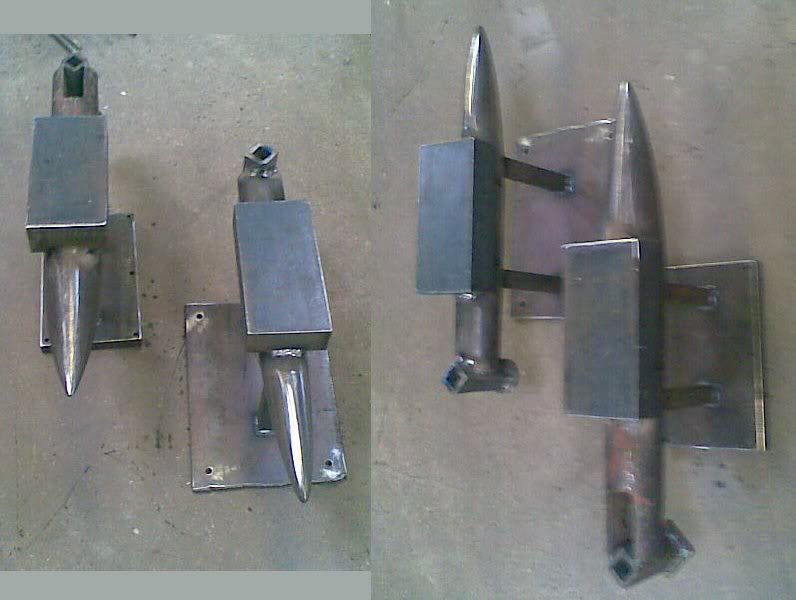
-
im not a member ( yet, but will join at the years end ), was wondering if any events were in my area as it seems most are in the south west.
im only a beginner and self taught, OK I share a workshop with a blacksmith so have picked up a few things and mainly make things useful to reenactors.
anyone have an suggestions?
Dave
-
whilst i wait for more news here I am going to try a few things myself with a 2kw single hotplate I just bought on ebay
-
have just bought a single induction hob, will open up the case and see if I can disconnect the thermostat in it and / or replace the coil to try a few things whilst awaiting developments on other things.
its a 2kw
-
I would be very interested in one of these, I do make coke forges and sometimes use them, most things I make are the same 2 items out of 12mm round and square ( 1/2" to you americans ) and need only to heat the end 75mm ( 3" ), it would save a lot of time lighting up the forge if I suddenly need to make a couple.
here in the UK we have 240v 50Hz mains power and I also have 3 phase 415v
-
-
that is exactly my aims with this, yes it has a 45 degree step on the other side but I dont know about the windows until I get it here and that will be some time so first step is get more info here,
found some austrian anvils on anvilfire and it matches the A one for measurements here http://www.anvilfire.com/anvils/ferd_anvil_004.php.
I have no idea of age though it seems old even for an anvil -
have come across this beat up old anvil and am thinking of a little bit of restoration and improving on the botched repair but first am looking for some info on it if any here can help

it is about 18" long and 10" tall and weighs about 120 to 150 lbs so I have been told.
it looks like it broke in half and has been patched up badly.
can anyone help with identifying it at all -
thank you Gene
-
I do see a lot of the buyers at events, also some are local and when we have a course running at the workshop that I share with a blacksmith people who have been using them for 2 days want to buy them ( and the solid fuel forges I make ).
we have another 2 courses soon, a beginners forgework ( 15 - 16th jan )and a beginners armouring ( 12 - 13th feb ). -
sorry about the delay, sold the only one I had recently and had to make more

picture quality is not good, was a new phone I was trying out.
here are 2 of the skeleton agricultural anvils I make
the main part of it is the wear part of a certain type of plough, the flat slab on top is an 8" length of fork lift tine.
oveall length is about 24 and 21 inches, height about 11" top is 8" by 4" and 2" thick.
though they only weigh about 30lbs on a solid base they are quite usable.
as soon as people see them they normally sell at 50 UK pounds though with the ammount of work and materials I am going to have to increase the price.
and if you are wondering about the odd thing on nthe back it is a socket for stake tools I make out of things like 4" hardened ball bearings
http://uk.ebid.net/perl/main.cgi?words=52487&mo=search&type=user -
I am away now for an event near coventry, when I get back I will get some pix of the underside of heel and horn.
-
at the end nearest the horn it is greatest, maybe 1/4" higher in the middle than the sides and as you towards the heel it slowly levels out until it is nearly flat by the hardy, will check it tommorow.
it does not look as if it has been ground down.
looking at it now after looking at the other pix in the anvilitis thread the heel looks long and maybe added on to include a pritchel ( dont know if this is likley but will examine it more closely soon and in just under a month at an event where it will be in use I should be able to get a few opinions about it ). -
under the horn and heel it looks even rougher.
this anvil as it is suits my needs.
at a few reenactment events, mostly private training weekends I take a solid fuel forge along and help a few newbies have a go at a little forgework as a little taster, often there are other with me who are a lot more experieced than me who also help with anything more advanced.
it is by appearance not a modern anvil made in the last few years though I understand it is not that old due to the pritchel.
it is also small and light enough to go in my van with everything else I have to take but big enough to use.
any idea of date it was likley to be made?
is there a reason for the top being convex rather than flat, it does not look like wear to me.
most of the marks on the top and horn are not as bad as they look in the pix and im hoping that after a little use it will look better
thank you all for the help and information
I hope that I have also added a little to the info as to what is out there and I will report back if I find out more. -
I recently bought this anvil and someone I see here has helped with some info about it ( many thanks ) but I thought I would post the details here too in case I can find out a bit more.
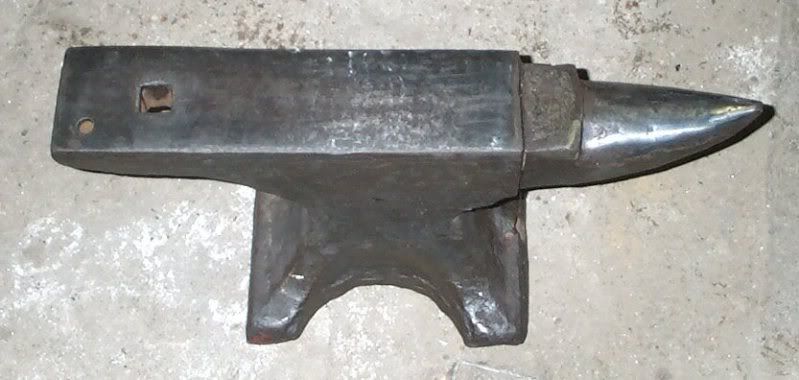
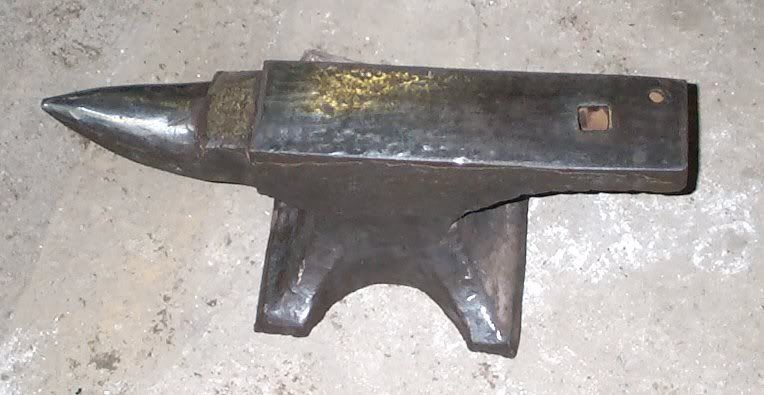

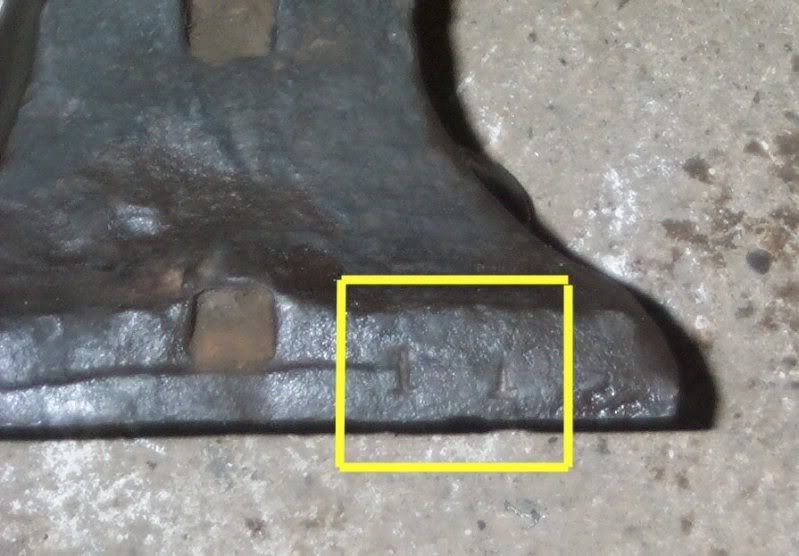
it has only 2 marks on it as far as I can see, both like an upside down T, one of them has the upright going to a point.
it is probably made in england, is quite old and is very roughly made.
the flat part on top is infact convex across the width and the edges are rough rather than straight and square.
I did not want to grind them square just yet but will try it as it is at first.
it is 21 1/2" long, 9 1/2" tall and the top is 3 3/4" wide
weight is 99.4 lbs 45.1 kg
handling holes etc
two holes in the front, one near the base and the other half way up
one half way up the rear, all of those about 3/4 square and the larger one in the base with quite a taper.
top is not delaminating or detempered as far as I can tell.
apart from the hole in the base the base is reasonably flat though I have not put a straight edge across it but the top of the anvil is definatly convex, mostly at the front ( I would say about 3/16 higher in the middle than the edges at the front end and just about flat near the hardy.
have some more pix to post soon.
the casting has a very rough surface ( worn smoother with age but still uneven ), like it was moulded in clay using your hands only.
the hardy hole is not square to the centerline of the anvil but is twisted at least 5 degrees anticlockwise IIRC.
the pritchel is 1/2" diameter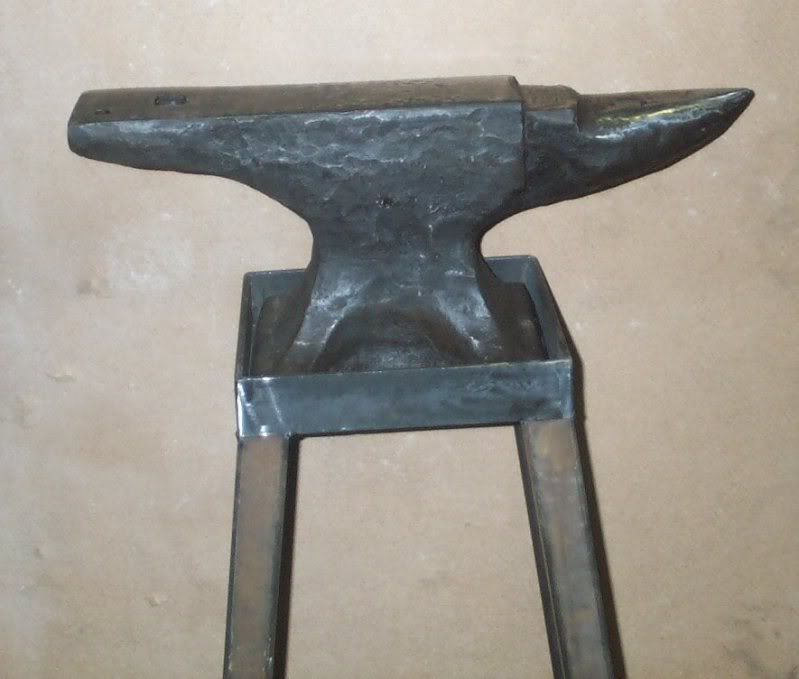
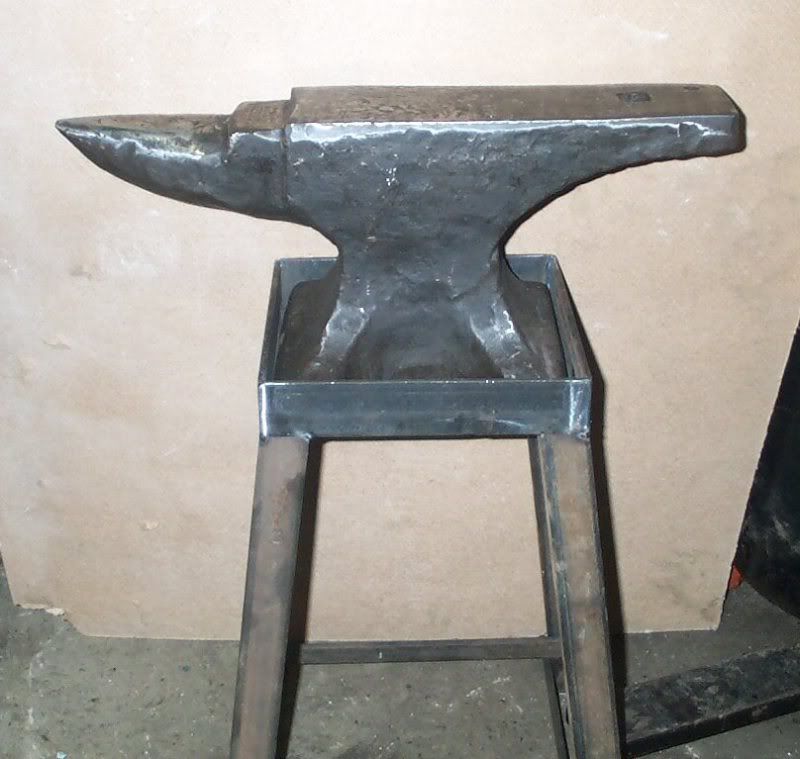
I like it and will use it, in fact it will probably be in use this weekend as I have some small items to make that I dont need the quarter ton monsters in the workshop for ( that are much to high for me as the owner of them is over 6' tall )



the wilderness gathering, this weekend
in Blacksmiths and Metalworkers Association of the South West UK
Posted
was good, i learnt a few things and got a few new ideas, met Dave ( who is knowledgeable and helpful ).